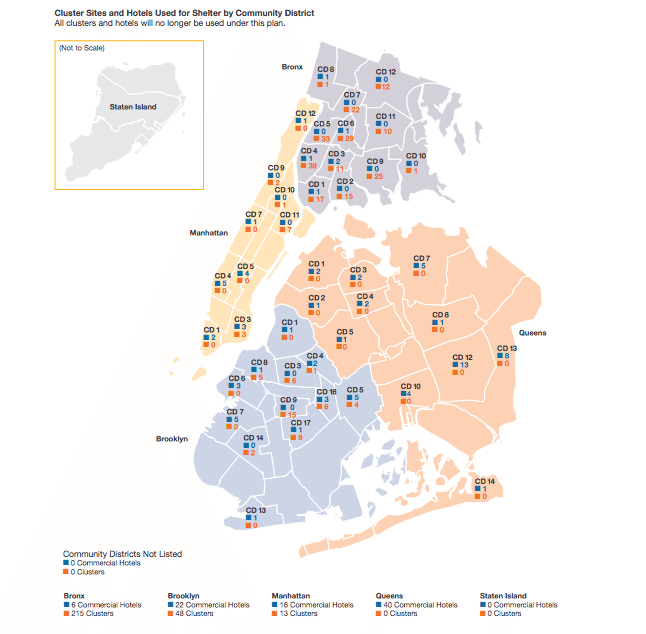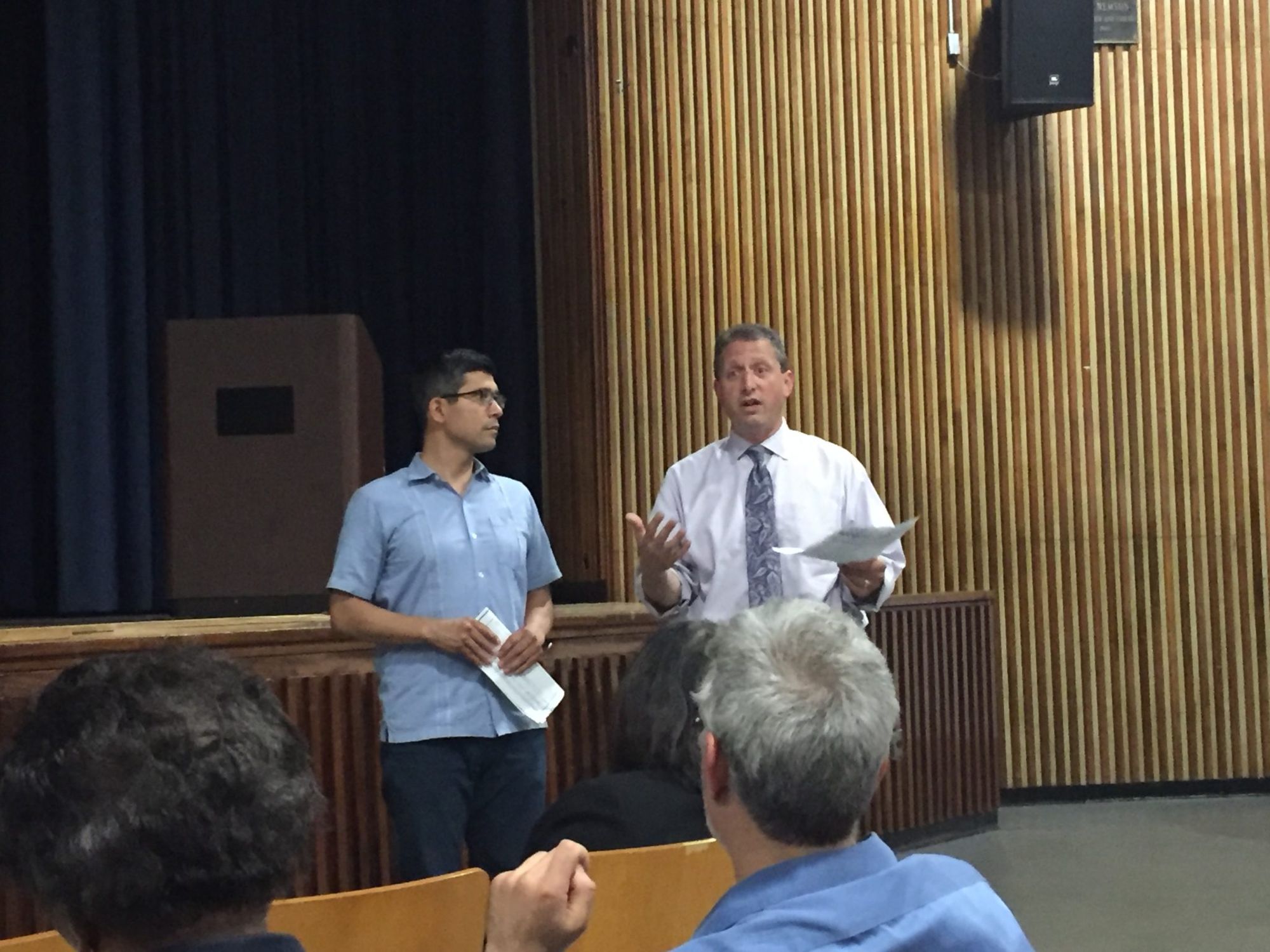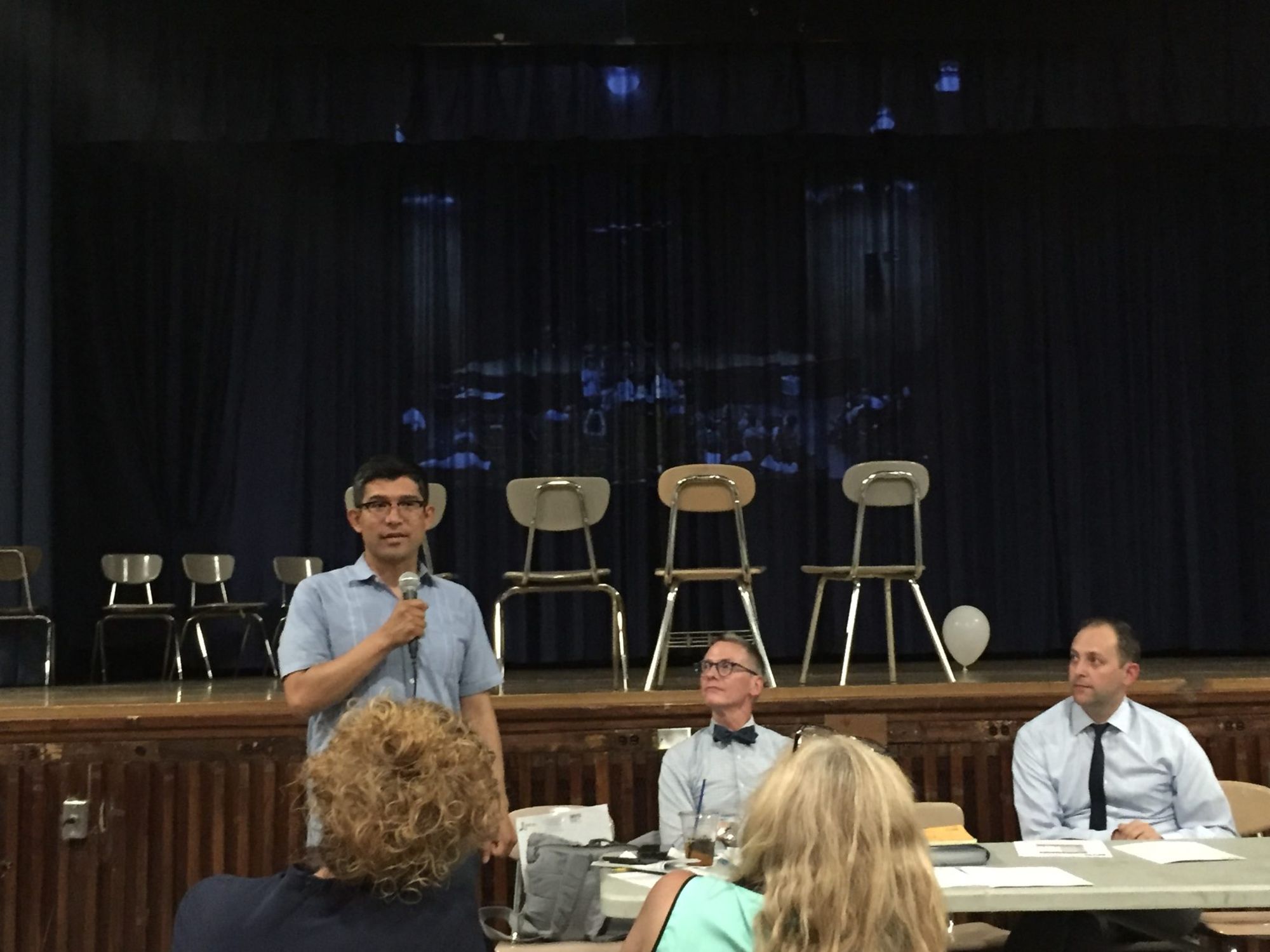Community Board 6 Begins Discussions On City’s Homeless Shelter Plan

Representatives of the NYC Department of Social Services discussed Mayor Bill de Blasio’s “Turning the Tide on Homelessness in New York City” plan with Community Board 6 members Wednesday evening, giving them the opportunity to help decide where future shelters will be situated.
In a meeting initiated by NYC City Council Member Brad Lander and Community Board 6 held at the John Jay Educational Campus (237 7th Avenue), Board Chair Sayar Lonial kicked things off by stating, “I am glad that the Council Member has brought this issue to our board [bringing] the issue of homelessness to the forefront on several occasions. I look forward to hearing this presentation from the city so that we can figure out what is the best means for siting, what is the best operation between communities and homeless shelters, and what makes this work.”

“We have to accept that for the foreseeable future we are going to have a homelessness crisis in New York City,” Council Member Lander stated. “More shelter capacity is needed to meet the needs.”
“In order for us to meet that, we have to increase our shelter capacity in a way that lets us pull out of the hotels, pull out of the cluster sites, and [build] more purposeful and appropriate shelters,” he continued.
“We have an opportunity to try something different here,” Lander explained, noting that through the meeting community members will gain a better understanding of the city’s homeless numbers and needs and proactively “try to find a way to think together, through the committee, through the board, where there might be appropriate locations and facilities in Community Board 6 to meet the need that’s identified.” Community Board 6 includes—Carroll Gardens, Cobble Hill, Columbia Waterfront, Gowanus, Park Slope, and Red Hook.
“That choice now is up to us,” he added.

Daniel Tietz, Chief Special Services Officer at the Human Resources Administration, served as a representative for the Department of Homeless Services, and began by providing a summary of Mayor de Blasio’s homeless shelter plan.
“We want to get out of the kinds of shelters that we don’t want people in,” he said. These include cluster sites and commercial hotels in which it is difficult to provide services to clients and difficult to maintain the facilities. These housing options are also expensive, he noted.
“The goal is to close down 360 sites that account for those clusters and hotels over the next 5 years and build 90 new shelters to replace that capacity,” he explained. The project would also include renovating existing shelters to create “shelter stock to meet [the city’s] expected capacity and need in the best way.”
The plan also ensures that homeless New Yorkers are provided “the opportunity to return to the boroughs or communities from which they came,” Tietz adds. “That’s only possible if you create capacity—good, purposeful shelters, in those boroughs and communities.”
“Our plan is to replace bad shelters with good shelters with good services, and to offer the opportunity for folks to be sheltered closer to their homes,” he said. The borough-based plan would keep homeless New Yorkers closer to their communities and support services such as schools, jobs, places of worship, etc.

John Henry Wood, Executive Director of Planning and Procurement for the Department of Homeless Services, explained the procurement process for new shelters and providers. DHS is actively looking throughout the city for facilities that would provide appropriate shelters for single adults, families with children, and adult families.
“Basically a non-profit provider will find a site, work with a landlord or developer, and [submit a proposal to] the Department of Social Services,” he explains. “They will write a narrative about the shelter they propose, prove that they have site control, show the types of services they’d like to provide, present a security plan and a maintenance plan.”
All proposals go through an evaluation process and budget review at the Department of Social Services. The process can take approximately six to nine months, Greenwood said.
Currently in the Community Board 6 neighborhoods, there is one traditional shelter, CAMBA‘s 100-bed women’s shelter located at 1402 8th Avenue (between 14th & 15th Streets) in Park Slope as well as a few commercial hotels.
Valerie Barton-Richardson, Executive Vice President of CAMBA, also attended Wednesday’s meeting to explain how that shelter has operated successfully in Park Slope since 1996. She said that while CAMBA is committed to providing quality services to its residents, it is also committed to being a positive part of the community.
“We believe in being a good neighbor. That means having community advisory board meetings so folks can get information about shelter operations on a regular basis.” She adds if neighbors have any issues or concerns—”Let’s talk about them. Let’s communicate. That dialogue, that ongoing partnership, is important in a shelter.”

She also noted there was some resistance back when the shelter first opened. “There was some negative response in the beginning,” she recalled. “People are afraid. People are concerned. They think of homeless people as a category, they don’t necessarily always think of them as individuals. They’re concerned about their property values,” she said.
“We hear all of that but we have a dialogue, we have a conversation. We provide information, we provide facts and then people get to know us. That’s been the process for us and it’s one that works,” she concluded.
During the question and answer session, one neighbor asked Tietz when in its development process does a community receive notification of a new shelter’s opening? DHS is required to give communities 30-days notice.
“Until we see the proposals, we vet the proposals…It wouldn’t make sense for us to give notice until we’re fairly certain this is something we intend to approve and go forward with. It’s 30 days from that moment,” Tietz responded.
The neighbor retorted, “You’ll be coming to us with an approved, budgeted, and organized thing…. I agree that we need them [shelters] here. I think they should be here, but the community has to have a say and I want it to be a meaningful say. I want it to be at a point in the process where something could be changed, if necessary.”
Notification is to inform a community of the city’s “intention to move forward with the shelter,” Tietz said. “I’ll acknowledge that that’s different from seeking permission,” he added.
“As we take down clusters and hotels, we have to create capacity. It’s going to have to happen across the city. We’re looking to more equitably distribute shelters across the city,” he continued. “So the choice then becomes [for communities to] help us make that happen, to weigh in,” before the city makes those decisions for them.
Tietz said community boards and community members should try to identify appropriate sites for shelters in their areas, approach the landlords and/or landowners, and contact developers and non-profit providers to operate the facility. A list of approved providers can be found on the DHS website.
A board member suggested that DHS initiate conversations with Community Board 6 when proposals come in for the district, so residents can review and have a say on which proposals they think would be better-suited for their neighborhoods.
“That is an interesting proposition, one I hadn’t considered,” Tietz said. “I wouldn’t rule that out.”
With summer break, the next meeting to discuss how the Mayor’s “Turning the Tide on Homelessness” plan will be implemented in Community Board 6 will likely take place in the fall. Check the CB6 calendar for updates.
See a copy of the full “Turning the Tide on Homelessness” plan here.




